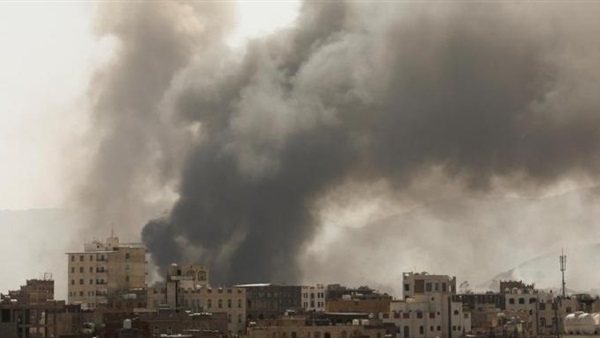Deadly Yemen migrant centre fire caused by Houthi projectiles, HRW says

A fire last week that killed more than 40 African migrants in an overcrowded detention centre in Yemen's capital Sanaa was started after Houthi forces fired projectiles during a skirmish with detainees, Human Rights Watch (HRW) said on Tuesday.
The United Nations migration agency IOM says the March 7 fire engulfed a
hangar-like building holding around 350 people from among 900 being held at the
Immigration, Passport and Naturalization Authority Holding Facility at Sanaa
airport.
Reuters spoke to one Ethiopian who described himself as a survivor of
the blaze and corroborated the HRW account of a projectile as the cause. It was
not possible to provide further independent verification.
IOM declined to comment on the cause of the blaze. The Houthis, who
control Yemen's capital Sanaa and run the detention centre, have said the
incident is under investigation.
Asked about the HRW account, Houthi spokesman Mohammed Abdulsalam did
not directly address the accusation that the fire was caused by a projectile
fired by security forces. He said the international community should help
provide better facilities for migrants, and the incident "should not be
politicised or exploited outside of its normal context".
Reuters spoke to one Ethiopian who described himself as a survivor of
the blaze and corroborated the HRW account of a projectile as the cause. It was
not possible to provide further independent verification.
IOM declined to comment on the cause of the blaze. The Houthis, who
control Yemen's capital Sanaa and run the detention centre, have said the
incident is under investigation.
Asked about the HRW account, Houthi spokesman Mohammed Abdulsalam did
not directly address the accusation that the fire was caused by a projectile
fired by security forces. He said the international community should help
provide better facilities for migrants, and the incident "should not be
politicised or exploited outside of its normal context".
"The guards then rounded up the migrants nearby and locked them in
the hanger," the HRW report said.
A first projectile was launched from a roof, producing smoke. A second
exploded loudly and started a fire, said HRW, which said it could not verify
the projectile types. People outside the burning hanger helped break the walls
and door to evacuate people.
Yemen has been at war for six years, pitting the Iran-aligned Houthis
who control the capital and most populous areas against a Saudi-backed
government based in the southern port of Aden. Millions of Yemenis live on the
edge of famine in what the United Nations calls the world's biggest
humanitarian crisis.
Around a dozen migrants who described themselves as survivors of last
week's fire in Sanaa protested on Monday outside a U.N. building in Aden. They
said that after the fire they had been deported to government-held territory
and had been forced to make a three-day journey to Aden.
Ahmed Abdallah, an Ethiopian among the group, described the incident,
telling Reuters a projectile had been fired through a hole into the room he was
in.
"The fire caught onto the piles
of pillows we are sleeping on. The room filled with smoke and we all started to
scream," he said. He escaped through a door.
"They locked the room to others
who were still inside," he said. "I was watching through the window
while my fellow inmates were burning."
Despite Yemen's war, migrants from the Horn of Africa still risk
dangerous sea crossings in the hands of smugglers to get there, en route to
Saudi Arabia or other wealthy Gulf countries.
In February, IOM estimates 1,255 irregular migrants arrived in Yemen,
mostly Ethiopians. The United Nations says migrants have been increasingly
stigmatised during the COVID-19 pandemic, after Houthi authorities in May
announced their first coronavirus case in a Somali found dead in a Sanaa hotel.
On Friday, footage released by the Houthis showed 44 bodies of those
killed in the detention centre blaze, lined up in numbered body bags in a dusty
cemetery being buried.
"Number 29!," called a burial supervisor as men lowered a body into a grave





